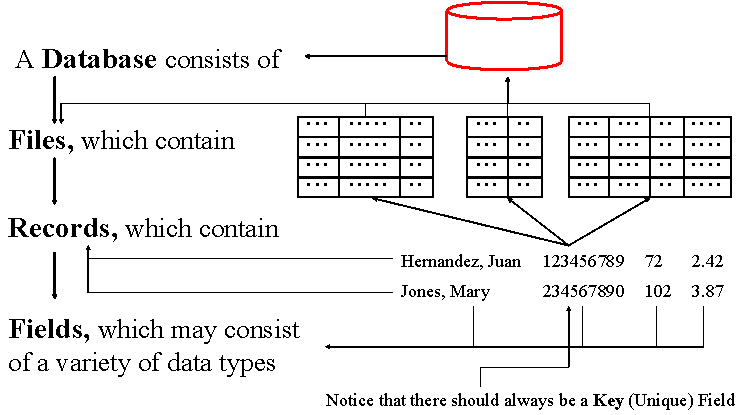|
What is a DBMS??
A DataBase Management
System (DBMS) is a collection of tools that are used to create,
maintain and manipulate a database. It is a set of applications intended
to help users and designers:
- Create data. This includes the creation of
tables or entity types (files) that will hold records (entity occurrences)
each of which can contain any number of fields (attributes) of varying data
types. It further
allows us to develop relationships between tables (to be explained later).
- Manipulate the data. Users can extract,
summarize and/or analyze the contents of the database through the use of query
languages available in the DBMS.
- Develop reports through the use of report
generators. Built into the DBMS are tools which allow the user to manipulate
data in certain ways and to customize the way in the reports appear. These
reports may generate periodic reports (i.e., reports that are run
periodically (daily, weekly, monthly, etc), on demand reports (i.e., as
needed. For example, a user generally might not be concerned with contrasting
monthly El Paso sales with Dallas sales, but on demand could do so if they
wished), or exception reports (i.e., reports which only report
exceptional activities).
- Maintain data. Generally, these roles are
reserved for database administrators and designers, but certainly, for user
developed databases, this feature is also available in the DBMS. Maintenance
of data implies:
 Updating.
Changing a record's contents Updating.
Changing a record's contents
 Adding.
Adding new tables/records/fields Adding.
Adding new tables/records/fields
 Deleting.
Removing tables/records/fields Deleting.
Removing tables/records/fields
At least for now, we might view a DBMS as a filter between
the User/Designer/DBA and the Database:
 We will discuss
DBMS in greater detail later.
??? What are
the origins of DBMS ???
That is the
next topic


This page was last updated on
02/26/04.
|
